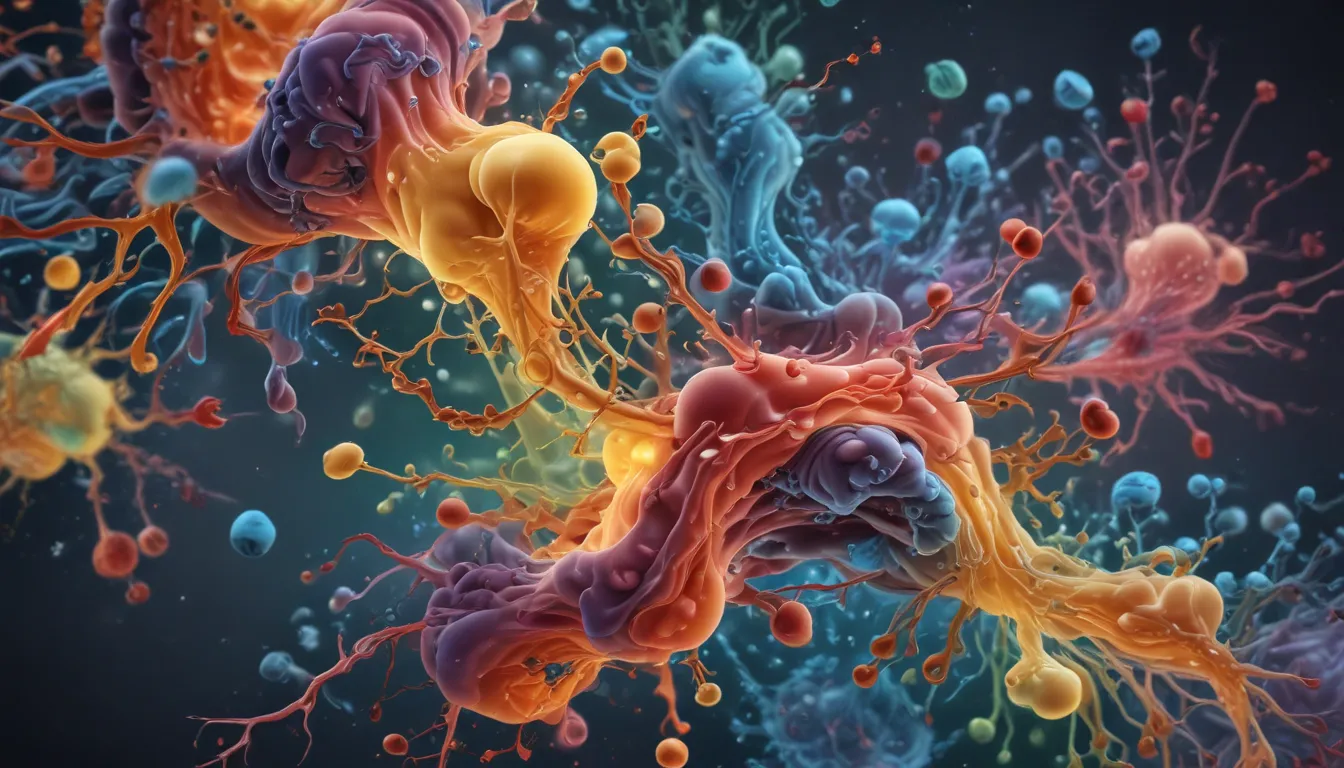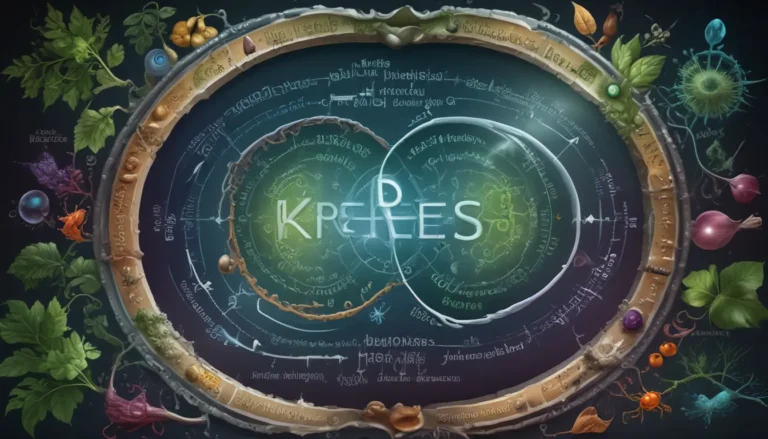A Note About Images: The images used in our articles are for illustration purposes only and may not exactly match the content. They are meant to engage readers, but the text should be relied upon for accurate information.
Enzyme kinetics, a captivating realm in the realm of biology, delves into the intricate mechanisms that govern the speed and efficiency of enzymatic reactions. Enzymes, often hailed as the “biological catalysts,” play a pivotal role in numerous physiological processes that sustain life. Grasping the dynamics of enzyme kinetics offers valuable insights into the workings, efficiency, and regulation of these catalysts within biological systems.
In this comprehensive guide, we will embark on a journey to unravel 19 surprising facts about enzyme kinetics that will broaden your understanding of this intriguing subject. From exploring the diverse groups of enzymes and their classifications to delving into the factors that influence enzymatic activity, we will unearth the intricate details that define the fascinating world of enzyme kinetics. Let’s venture into this exploration to uncover unforeseen facts and enhance our comprehension of the remarkable functions of enzymes in biological systems.
Key Takeaways:
- Enzyme kinetics scrutinizes the pace of enzymes in living organisms and is shaped by factors like pH and temperature. It’s akin to comprehending how swiftly and under what circumstances enzymes operate in our bodies.
- Enzyme-substrate binding is a reversible process, and enzymes can demonstrate a variety of catalytic mechanisms. It’s akin to a lock and key that can engage and disengage multiple times, with enzymes employing different strategies to drive reactions forward.
Enzymes: The Biological Catalysts
Enzymes function as biological catalysts that accelerate chemical reactions in living organisms without undergoing any lasting alterations themselves.
Unraveling Enzyme Kinetics
Enzyme kinetics, a branch of biochemistry, focuses on understanding the rates at which enzymes catalyze biochemical reactions.
Influences on Enzyme Kinetics
Factors such as pH and temperature play a crucial role in determining the activity of enzymes, highlighting the importance of optimal conditions for enzyme function.
Reversible Enzyme-Substrate Binding
The binding of enzymes to their substrates is a dynamic process that can occur multiple times, underscoring the versatility of enzyme-substrate interactions.
Diverse Catalytic Mechanisms
Enzymes can catalyze reactions through various mechanisms, including acid-base catalysis, covalent catalysis, and metal ion catalysis, showcasing the diversity in catalytic strategies employed by enzymes.
Michaelis-Menten Equation
The Michaelis-Menten equation serves as a mathematical model that elucidates the rate of enzyme-catalyzed reactions based on substrate concentration, providing a framework for understanding enzyme kinetics.
Allosteric Regulation
Enzymes can undergo allosteric regulation, where the binding of a molecule to a specific site on the enzyme induces changes in its catalytic activity, shedding light on the intricate regulatory mechanisms governing enzyme function.
Enzyme Inhibition
Competitive and non-competitive inhibitors can obstruct the active site of enzymes, impeding substrate binding and catalysis, illustrating the various ways in which enzyme activity can be modulated.
Spectrophotometric Analysis
Spectrophotometry emerges as a prevalent technique for measuring the absorbance or emission of light by enzyme-substrate complexes, offering insights into enzymatic reactions.
Impact of Enzyme Concentration
Changes in enzyme concentration can significantly influence the rate of enzyme-catalyzed reactions, highlighting the pivotal role of enzyme levels in catalytic processes.
Cooperative Behavior
Enzymes with multiple subunits can exhibit cooperativity, where the binding of a substrate to one subunit impacts the activity of other subunits, showcasing the interplay between enzyme subunits.
Denaturation of Enzymes
Extreme pH and temperature conditions can lead to the denaturation of enzymes, rendering them inactive and underscoring the sensitivity of enzymes to environmental factors.
Enzyme-Substrate Ratios
The ratio of enzyme to substrate can impact the rate of enzymatic reactions, with optimal ratios maximizing catalytic efficiency, highlighting the importance of maintaining a balanced enzyme-substrate ratio.
Varied Reaction Orders
Enzyme-catalyzed reactions can exhibit different reaction orders, including zero-order, first-order, or second-order kinetics, reflecting the complexity of enzymatic processes.
Modulation by Activators
Activators can enhance the catalytic activity of enzymes by either increasing their affinity for substrates or inducing conformational changes, illustrating the diverse factors that influence enzyme kinetics.
pH-Dependent Activity Profiles
Enzymes can display pH-dependent activity profiles, with varying optimal pH ranges for different enzymes, showcasing the adaptation of enzymes to specific biological environments.
Substrate Specificity
Each enzyme exhibits specificity towards a particular substrate or group of substrates, ensuring precision in biochemical pathways and highlighting the unique characteristics of enzyme-substrate interactions.
Role of Enzyme Cofactors
Cofactors, such as vitamins or metal ions, can interact with enzymes to facilitate catalysis by providing additional chemical groups or modifying the enzyme’s structure, elucidating the essential role of cofactors in enzymatic reactions.
Implications for Drug Metabolism
A profound understanding of enzyme kinetics is crucial for comprehending drug metabolism processes, enabling scientists to improve drug design and dosing strategies, underscoring the pivotal role of enzyme kinetics in healthcare and pharmacology.
Enzyme kinetics represents a gateway to unraveling the intricate machinery that governs biological reactions. The 19 surprising facts about enzyme kinetics shed light on the multifaceted nature of this field, from elucidating enzyme-substrate interactions to exploring the factors that shape enzyme activity. Through a deeper exploration of enzyme kinetics, we gain valuable insights into the mechanisms driving vital biological processes.
Conclusion
In conclusion, enzyme kinetics stands as a captivating field that unveils the mechanisms behind enzymatic reactions. The array of surprising facts discussed in this article underscores the complexity of enzyme kinetics, from its diverse catalytic mechanisms to its susceptibility to external influences. Moreover, the practical applications of enzyme kinetics in medicine, biochemistry, and biotechnology underscore its significance in advancing various scientific domains.
Enzyme kinetics serves as a cornerstone for understanding the intricate processes that govern biological systems. By unraveling the enigma of enzyme kinetics, scientists pave the way for groundbreaking discoveries with the potential to revolutionize our world.
FAQs
- What is enzyme kinetics?
-
Enzyme kinetics pertains to the study of enzyme-catalyzed reactions and the factors influencing their activity.
-
Why is enzyme kinetics important?
-
Enzyme kinetics plays a pivotal role in various fields, including medicine, biochemistry, and biotechnology, by offering insights into enzyme functionality.
-
What factors impact enzyme activity?
-
Enzyme activity can be influenced by factors such as temperature, pH, substrate concentration, inhibitors, and activators, underscoring the complex regulatory mechanisms governing enzyme function.
-
How is enzyme activity quantitatively assessed?
-
Enzyme activity can be quantitatively analyzed through parameters like initial reaction rate, Michaelis-Menten kinetics, and Lineweaver-Burk plots, providing a quantitative framework for studying enzyme kinetics.
-
Are all enzymes identical in terms of kinetics?
-
No, enzymes exhibit diverse kinetic properties owing to structural variations, functional diversity, and the specific reactions they catalyze.
-
Can enzyme kinetics be applied in real-world scenarios?
- Absolutely! Enzyme kinetics finds extensive applications in industries such as pharmaceuticals, food processing, and environmental monitoring, highlighting the practical utility of studying enzyme kinetics in diverse contexts.
Enzyme kinetics encapsulates a realm of wonder and discovery, offering insights into the fundamental processes that sustain life. As we delve deeper into the realm of enzyme kinetics, we unearth a tapestry of complexity and elegance that defines the intricate dance of biochemical reactions within living systems. Trust in the process of exploration and learning as we unravel the mysteries of enzyme kinetics together.






